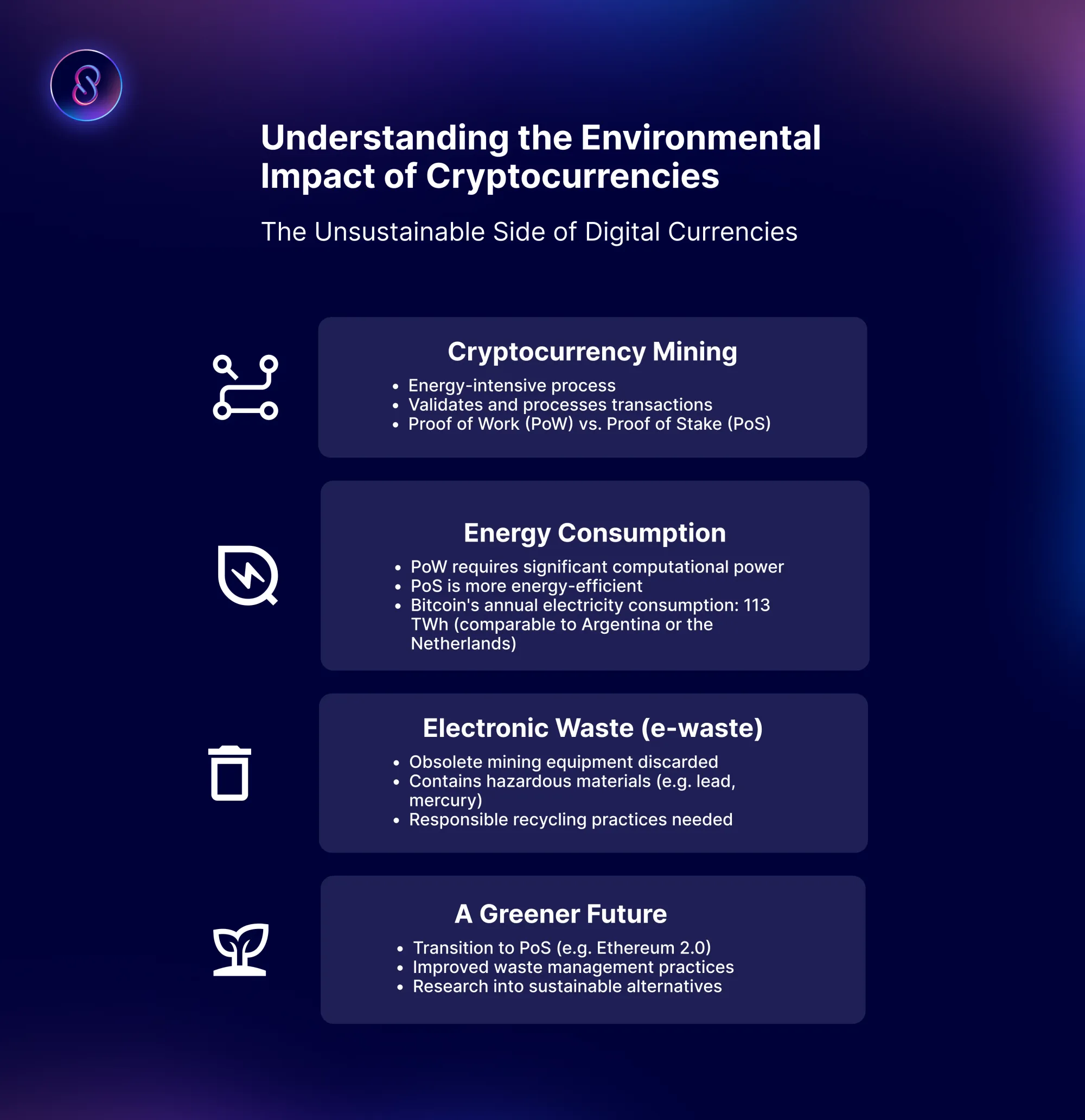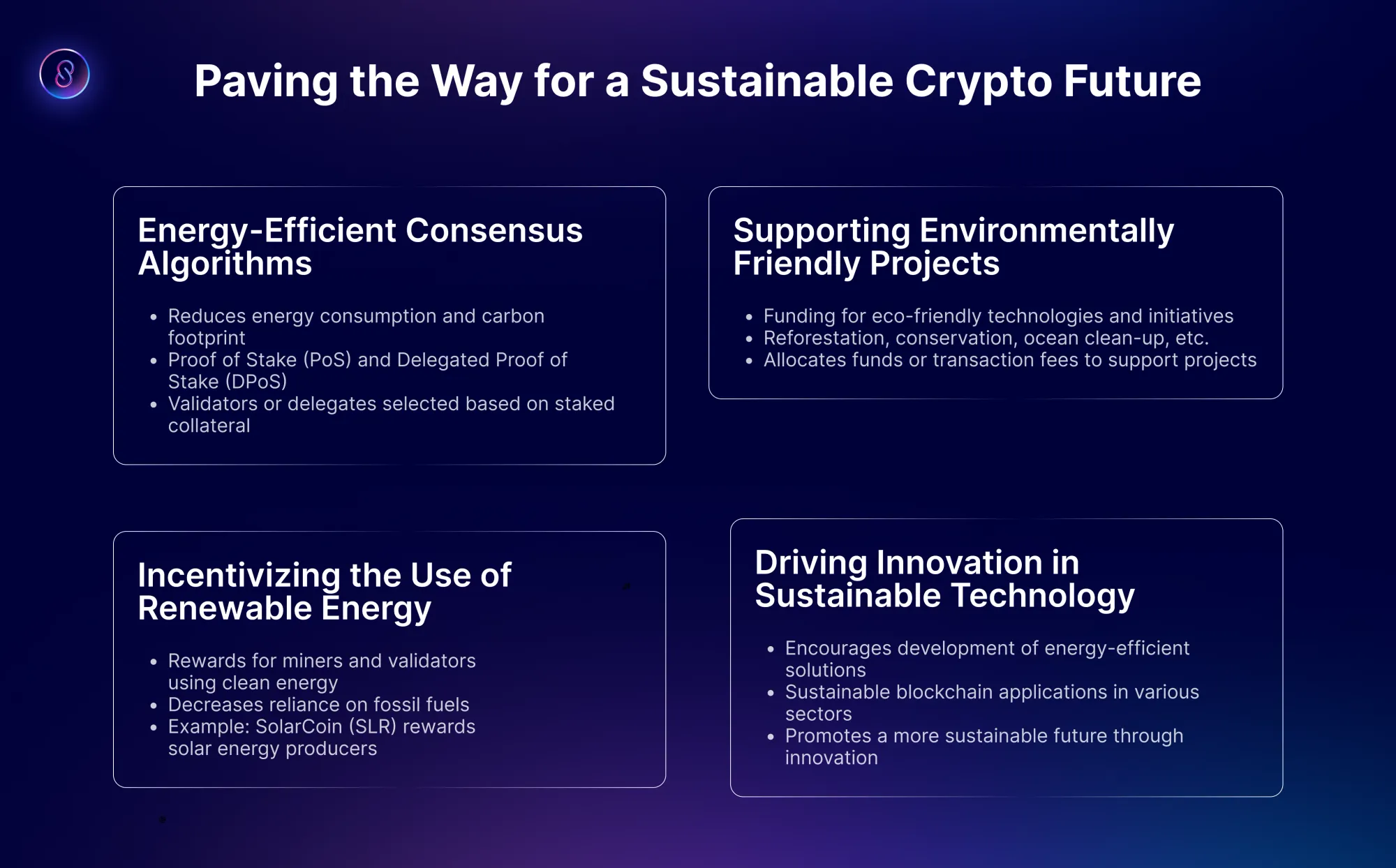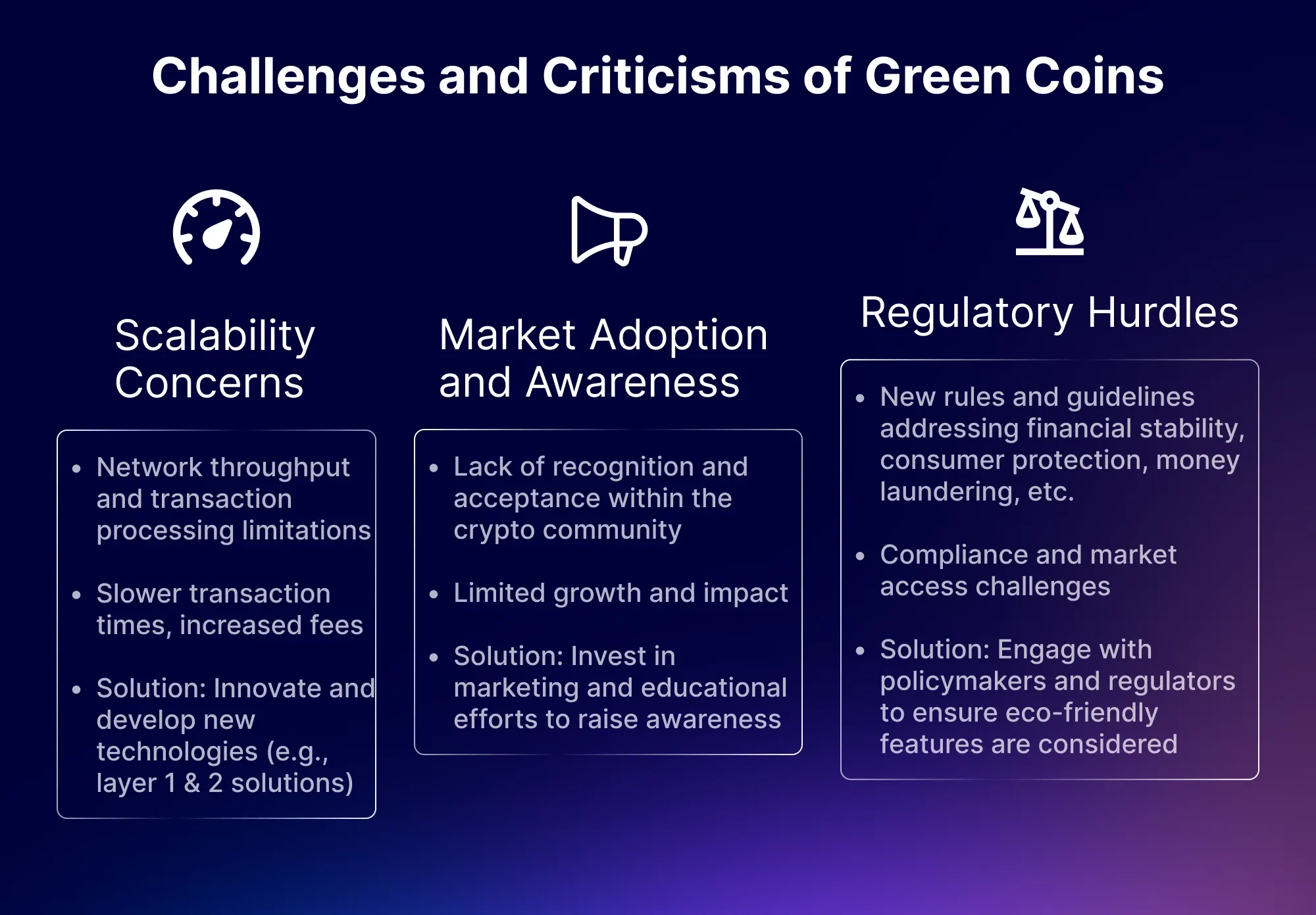The Environmental Impact of Cryptocurrencies: Can Green Coins Save the Planet?
In recent years, cryptocurrencies have taken the world by storm, offering a decentralized alternative to traditional financial systems and transforming the way we conduct transactions. While the potential of digital currencies is undeniable, it is crucial to evaluate their environmental impact.

In recent years, cryptocurrencies have taken the world by storm, offering a decentralized alternative to traditional financial systems and transforming the way we conduct transactions. While the potential of digital currencies is undeniable, it is crucial to evaluate their environmental impact.
As the popularity of cryptocurrencies like Bitcoin and Ethereum continues to soar, so does the demand for energy and resources needed to maintain these networks. The emergence of green coins – a new breed of eco-friendly cryptocurrencies – has sparked hope for a more sustainable future in the crypto space. But can green coins really save the planet from the environmental consequences of cryptocurrency adoption?
In this article, we will delve into the environmental impact of cryptocurrencies, the role of green coins in mitigating these effects, and the challenges that lie ahead for sustainable crypto practices.
Understanding the Environmental Impact of Cryptocurrencies
The rapid growth of the cryptocurrency market has brought forth several concerns regarding its environmental impact. As digital currencies like Bitcoin and Ethereum gain mainstream adoption, the energy consumption and e-waste associated with cryptocurrency mining operations have become increasingly significant.
Cryptocurrency mining is an essential process that validates and processes transactions within a decentralized network. This process is notoriously energy-intensive, especially for cryptocurrencies that rely on the Proof of Work (PoW) consensus algorithm. PoW requires miners to solve complex mathematical puzzles, which demand a significant amount of computational power. The competitive nature of mining means that miners constantly need to upgrade their equipment to stay profitable, which further increases energy consumption.
In contrast, Proof of Stake (PoS) is a more energy-efficient consensus algorithm used by some cryptocurrencies. PoS relies on validators, who are chosen to create new blocks and validate transactions based on the amount of cryptocurrency they hold and are willing to "stake" as collateral. This approach eliminates the need for energy-intensive mining operations, as validators are selected based on their stake rather than their computational power.
The carbon footprint of cryptocurrencies, particularly those using the PoW algorithm, is a growing concern. Bitcoin, the most well-known and widely adopted cryptocurrency, has a carbon footprint comparable to that of a small country. According to the Cambridge Centre for Alternative Finance, Bitcoin's annual electricity consumption is estimated to be around 113 TWh, which is higher than the energy consumption of countries like Argentina and the Netherlands. Other major cryptocurrencies, such as Ethereum, have also been significant energy consumers, although they have transitioned to a more sustainable PoS model (Ethereum 2.0).
Another environmental challenge associated with the cryptocurrency industry is electronic waste (e-waste) generation. As mining equipment becomes obsolete or less efficient, it is often discarded, leading to a surge in e-waste. Proper waste management is crucial to minimize the environmental impact of this discarded equipment, which contains hazardous materials like lead, mercury, and other heavy metals. Responsible recycling practices are essential to prevent these toxic substances from contaminating soil and water resources.

The Emergence of Green Coins: Eco-Friendly Cryptocurrencies Leading the Charge for a Sustainable Future
Green coins, also known as eco-friendly cryptocurrencies or sustainable digital currencies, are designed with energy efficiency and environmental sustainability in mind. These cryptocurrencies aim to minimize their carbon footprint by utilizing innovative consensus algorithms, incentivizing the use of renewable energy, and reducing e-waste. The purpose of green coins is to provide an environmentally conscious alternative to traditional cryptocurrencies, enabling users to participate in the digital economy while minimizing the negative impact on the planet.
Examples of Leading Green Cryptocurrencies
1. Internet Computer Blockchain (ICP)
The Internet Computer is a revolutionary blockchain project developed by the DFINITY Foundation. It aims to create a decentralized, global computing platform that supports smart contracts and dApps at scale while prioritizing energy efficiency. The Internet Computer employs an innovative consensus mechanism called Threshold Relay, which combines aspects of Proof of Stake and other advanced cryptographic techniques to provide a highly secure and energy-efficient network.
Website: https://dfinity.org/
2. Chia Network (XCH)
Chia Network is an innovative blockchain and smart transaction platform that aims to provide a more energy-efficient alternative to traditional cryptocurrencies like Bitcoin. Chia utilizes a unique consensus algorithm called Proof of Space and Time (PoST), which combines the concept of Proof of Space (storage space used) and Proof of Time (a time delay to prevent manipulation). This approach enables the network to rely on unused disk space rather than energy-intensive computations, significantly reducing energy consumption.
Website: https://www.chia.net/
3. Nano (NANO)
Nano is a lightweight cryptocurrency designed for fast, feeless transactions and minimal energy consumption. Unlike Proof of Work and Proof of Stake algorithms, Nano employs a unique consensus mechanism called the Open Representative Voting (ORV) system. In ORV, users delegate their voting power to trusted representatives, who validate transactions on their behalf. This approach allows the network to maintain security and decentralization while using only a fraction of the energy required by traditional cryptocurrencies.
Website: https://nano.org/
4. Cardano (ADA)
Cardano is a decentralized public blockchain and cryptocurrency project focused on providing a more sustainable and scalable platform for smart contracts and decentralized applications (dApps). Cardano uses a Proof of Stake-based consensus algorithm called Ouroboros, which relies on validators staking their ADA coins to validate transactions and create new blocks. This method greatly reduces energy consumption compared to Proof of Work-based systems, making Cardano a more environmentally friendly option.
Website: https://cardano.org/
5. Ethereum 2.0 (ETH2)
Ethereum 2.0, also known as ETH2 or Serenity, is an upgrade to the Ethereum network, which aimed to address issues related to scalability, security, and energy consumption. Ethereum 2.0 transitioned from the energy-intensive Proof of Work consensus algorithm to a more sustainable Proof of Stake model. Validators in the new system are required to stake their Ether (ETH) to participate in the validation process, significantly reducing the network's energy consumption.
Website: https://ethereum.org/eth2/
The Role of Green Coins in Reducing Environmental Impact: Paving the Way for a Sustainable Crypto Future

The goal of Green coins, or eco-friendly cryptocurrencies, is to tackle environmental challenges by focusing on energy efficiency, renewable energy, and sustainable technology. Let's explore briefly the role of green coins in reducing the environmental impact of the cryptocurrency space and their potential to drive innovation in sustainable technology.
Adoption of Energy-Efficient Consensus Algorithms
One of the primary factors contributing to the environmental impact of cryptocurrencies is the energy-intensive nature of their consensus algorithms. Traditional cryptocurrencies like Bitcoin rely on the Proof of Work (PoW) mechanism, which requires miners to solve complex mathematical problems using vast amounts of computational power. This process consumes a significant amount of energy, leading to an increased carbon footprint.
Green coins address this issue by adopting energy-efficient consensus algorithms such as Proof of Stake (PoS), Delegated Proof of Stake (DPoS), and other innovative mechanisms that minimize energy consumption. In PoS and DPoS systems, validators or delegates are chosen based on the amount of cryptocurrency they hold and are willing to "stake" as collateral, rather than their computational power. This approach significantly reduces the energy required to maintain the network, ultimately lowering the environmental impact of these digital assets.
Incentivizing the Use of Renewable Energy Sources
Another way green coins contribute to reducing the environmental impact of cryptocurrencies is by incentivizing the use of renewable energy sources in their mining and validation processes. For instance, some green cryptocurrencies offer rewards or incentives to miners and validators that utilize solar, wind, hydroelectric, or other forms of clean energy to power their operations. By promoting the use of renewable energy, green coins help decrease the industry's reliance on fossil fuels, ultimately reducing the carbon footprint associated with cryptocurrency mining.
Additionally, some green coins are designed to specifically support renewable energy projects or grid management. For example, SolarCoin (SLR) rewards solar energy producers with SLR tokens for every MWh of clean energy generated. This incentivizes further investment in solar energy infrastructure, driving the adoption of renewable energy sources and contributing to a more sustainable future.
Supporting Environmentally Friendly Projects
Green coins also play a crucial role in promoting and supporting environmentally friendly projects and initiatives. By prioritizing sustainability and environmental responsibility, these digital assets can help fund and facilitate the development of eco-friendly technologies, green infrastructure, and other projects aimed at mitigating climate change.
For instance, some green coins focus on specific environmental causes, such as reforestation, conservation, or ocean clean-up efforts. These cryptocurrencies often allocate a portion of their generated funds or transaction fees to support such projects, creating a direct link between the digital asset's usage and positive environmental impact. By championing and funding environmentally friendly projects, green coins contribute to the global effort to combat climate change and protect our planet.
Driving Innovation in Sustainable Technology
Lastly, green coins are essential drivers of innovation in sustainable technology. By pushing the boundaries of what is possible within the cryptocurrency industry, these eco-friendly digital assets encourage the development of new, energy-efficient technologies that can be applied across various sectors.
Blockchain, the underlying technology behind cryptocurrencies, is already demonstrating its potential to revolutionize industries beyond finance. Green coins can facilitate the development and implementation of sustainable blockchain solutions in areas such as supply chain management, energy distribution, and waste management, among others. As more industries adopt blockchain technology and digital currencies, the innovations spurred by green coins will be instrumental in promoting a more sustainable future.
Challenges and Criticisms of Green Coins

Despite their potential benefits, green coins face several challenges and criticisms that need to be addressed in order to achieve widespread adoption and success. In this article, we will delve into the scalability concerns, market adoption and awareness issues, and regulatory hurdles faced by green coins and explore potential solutions to these challenges.
Scalability Concerns
One of the primary challenges faced by green coins is the issue of scalability. While energy-efficient consensus algorithms like Proof of Stake and Delegated Proof of Stake help reduce the environmental impact of cryptocurrency networks, they can also introduce potential limitations in terms of network throughput and transaction processing capacity. As more users join a network and transaction volume increases, these limitations may lead to slower transaction times, increased fees, and other performance-related issues.
To address scalability concerns, green coins must continue to innovate and develop new technologies and solutions that can help improve network performance without compromising on energy efficiency or environmental sustainability. One prime example of a layer 1 solution - is Internet Computer Protocol ( ICP). Also, some projects are exploring the use of layer 2 solutions, such as sidechains or state channels, to offload transactions from the main blockchain and increase overall throughput. By implementing these and other cutting-edge solutions, green coins can overcome scalability challenges and continue to provide a sustainable alternative to traditional cryptocurrencies.
Market Adoption and Awareness
Another challenge faced by green coins is the issue of market adoption and awareness. Despite their potential benefits, many eco-friendly cryptocurrencies still struggle to gain widespread recognition and acceptance within the broader cryptocurrency community and beyond. This lack of awareness can limit the growth and impact of green coins, preventing them from reaching their full potential as drivers of environmental sustainability within the digital currency space.
To overcome this challenge, green coins must invest in marketing and educational efforts aimed at raising awareness of their environmental benefits and promoting their adoption among users, investors, and businesses. By showcasing the advantages of green coins and highlighting their potential to drive positive environmental change, these digital assets can attract a broader audience and encourage more people to consider eco-friendly alternatives to traditional cryptocurrencies.
Regulatory Hurdles
Finally, green coins face regulatory hurdles that can impact their growth and adoption. As the cryptocurrency industry continues to evolve, governments and regulatory bodies around the world are developing new rules and guidelines to address concerns related to financial stability, consumer protection, and money laundering, among others. While these regulations are essential for the long-term success and legitimacy of the digital currency space, they can also pose challenges for green coins, particularly in terms of compliance and market access.
To navigate the complex regulatory landscape, green coins must actively engage with policymakers and regulators to ensure that their eco-friendly features and benefits are considered in the development of new regulations. By collaborating with authorities and advocating for the inclusion of sustainability considerations in the regulatory framework, green coins can help shape a more environmentally conscious future for the cryptocurrency industry.
Conclusion
The environmental impact of traditional cryptocurrencies has become a pressing concern in recent years, as the energy-intensive mining processes associated with these digital assets contribute to an increased carbon footprint and other negative environmental consequences. Green coins, or eco-friendly cryptocurrencies, offer a potential solution to this problem by prioritizing energy efficiency, renewable energy, and environmental sustainability in their design and operation.
As we have explored throughout this article, Green coins offer a promising path toward a more sustainable and responsible future for the cryptocurrency industry. By harnessing the power of innovation, regulation, and public awareness, these eco-friendly digital assets can help mitigate the environmental impact of cryptocurrencies and promote sustainable cryptocurrency practices. As the world grapples with the urgent issue of climate change, the role of green coins in driving positive environmental change becomes increasingly essential for the long-term viability and success of the digital currency space. Embracing green coins and their potential to make a lasting positive impact on our planet is a crucial step in building a more sustainable future for all.

Connect with InfinitySwap
Bitfinity Wallet |AMM | Twitter | Website | Telegram | Discord | Github






Comments ()